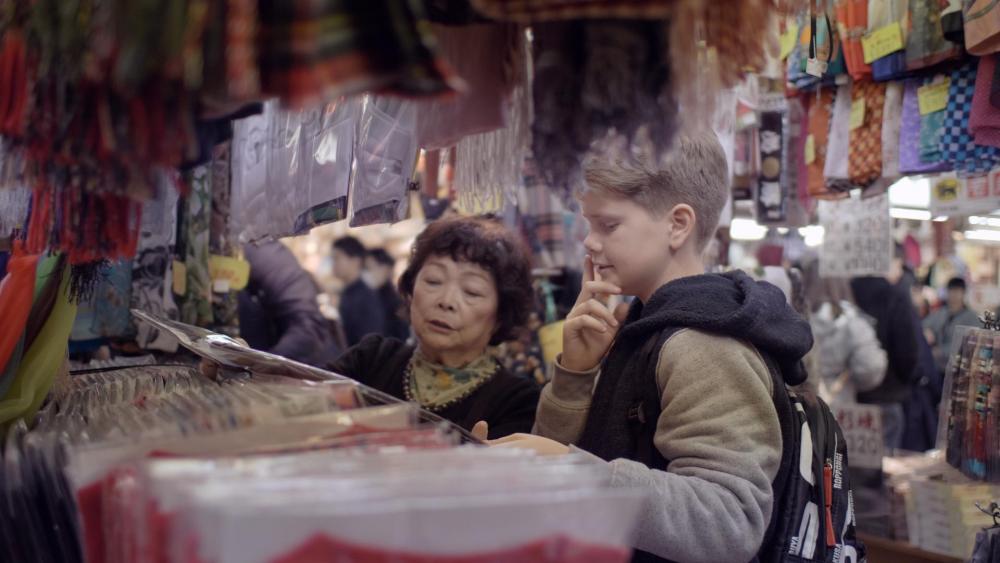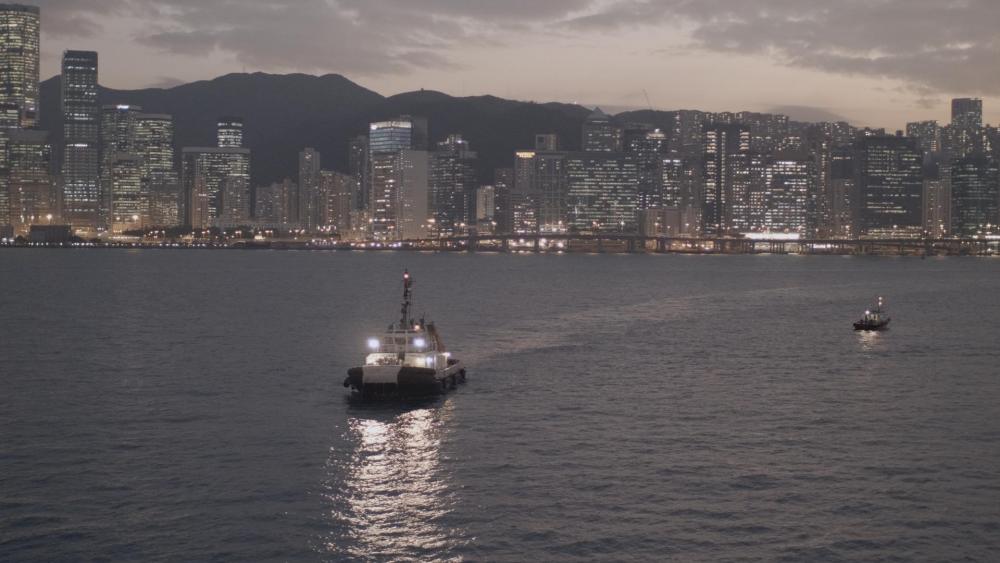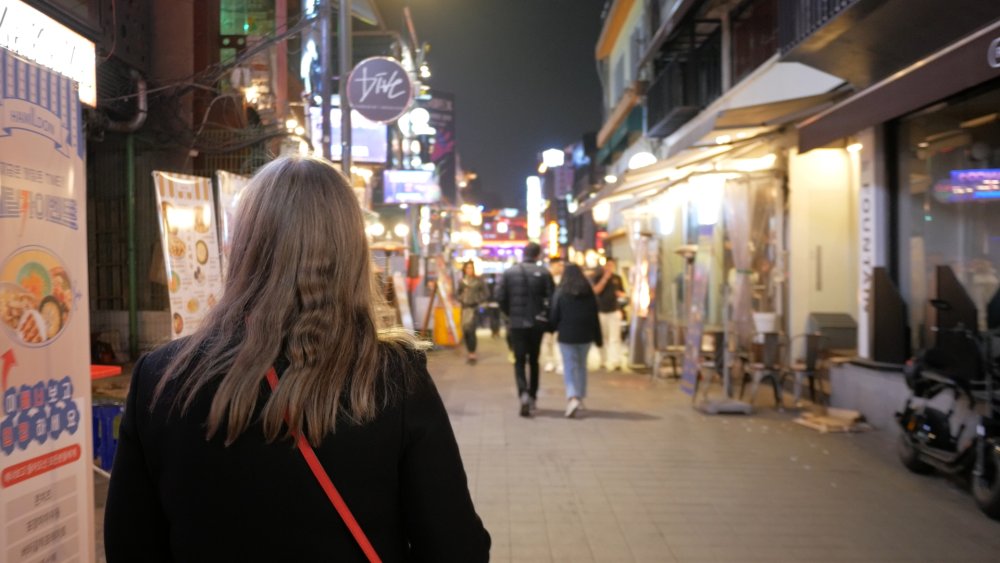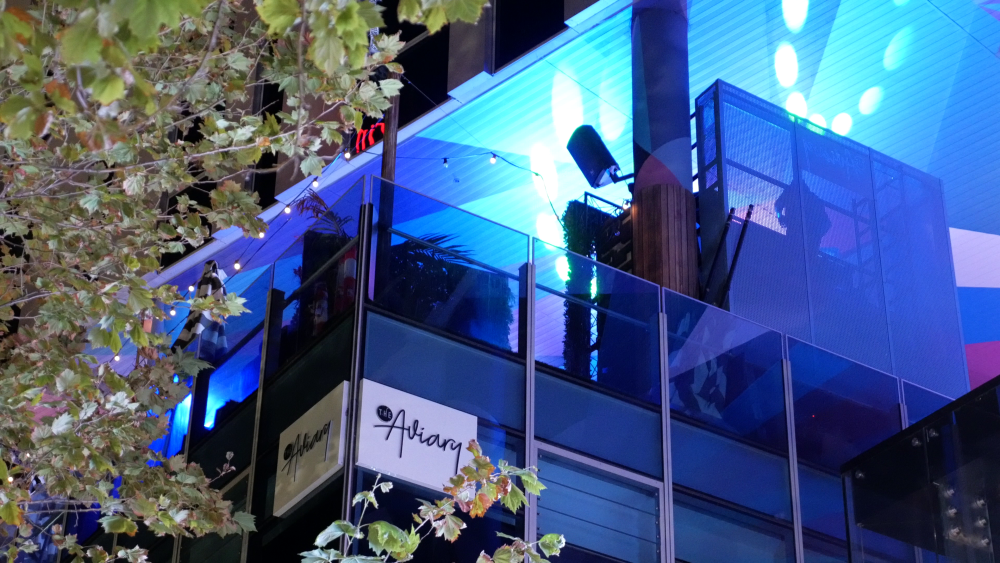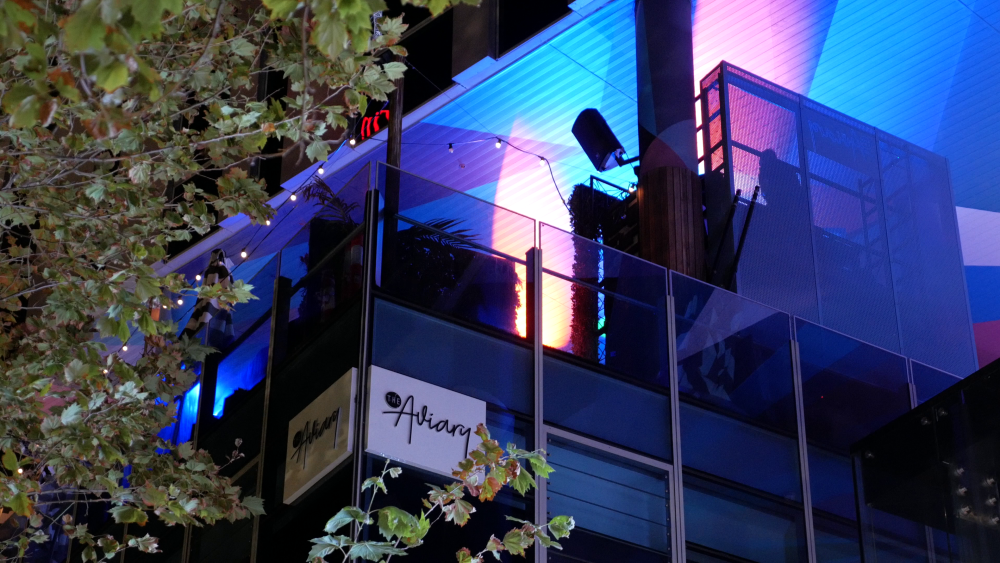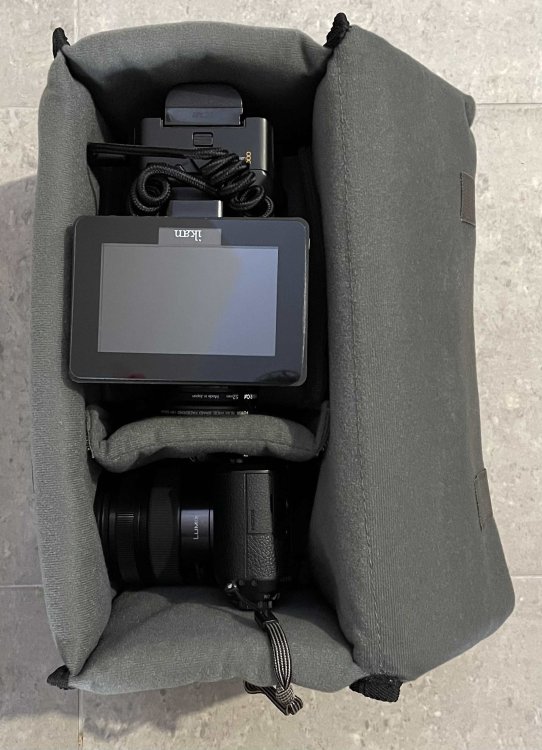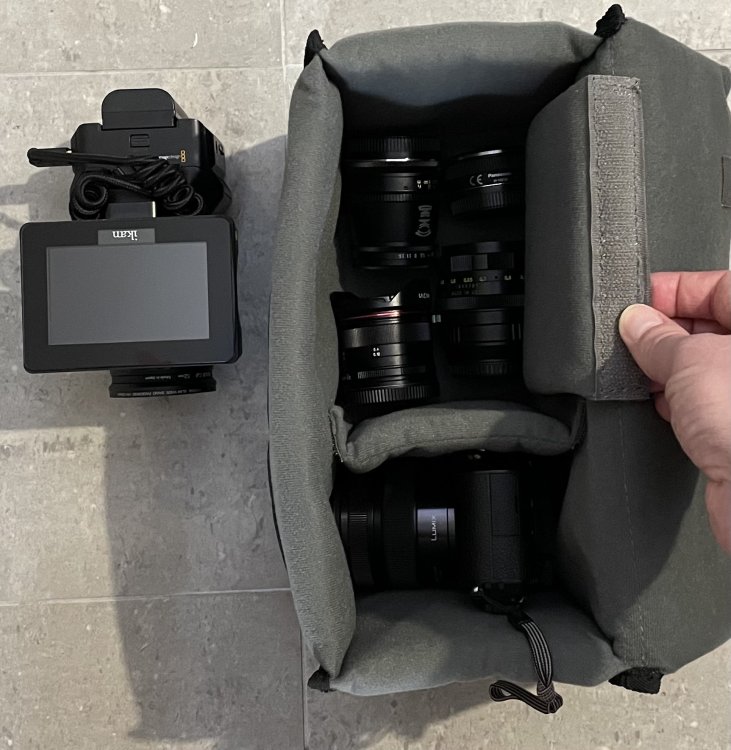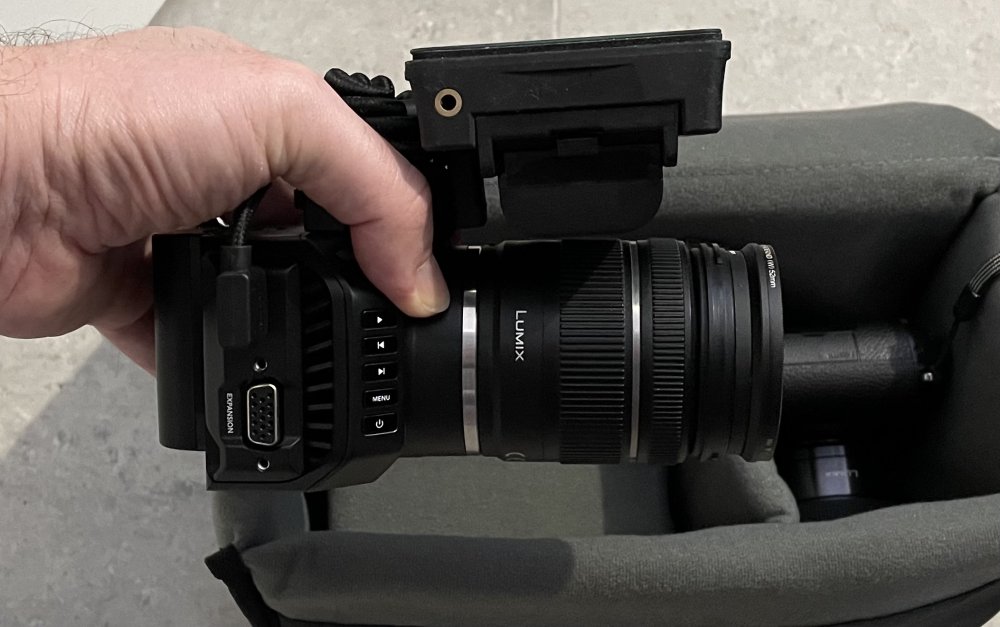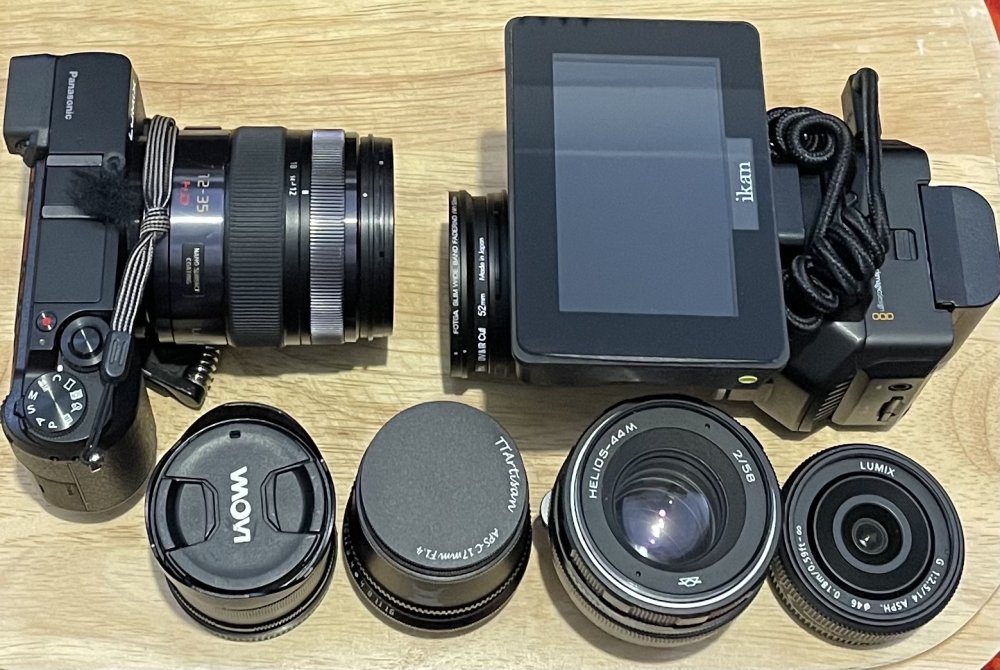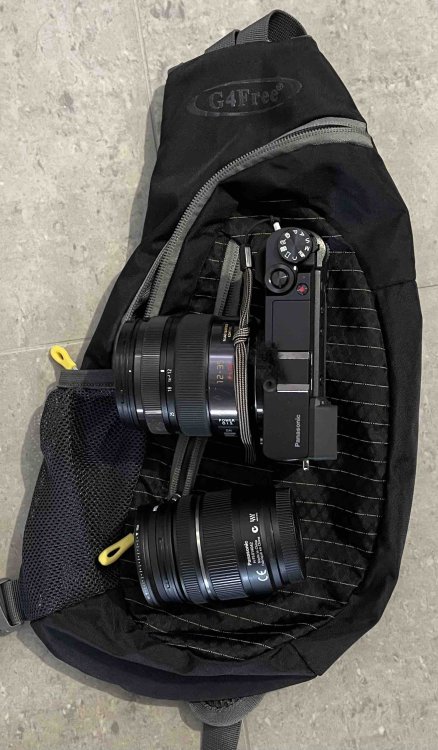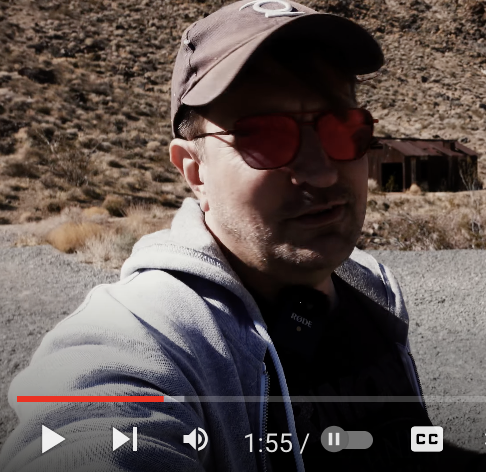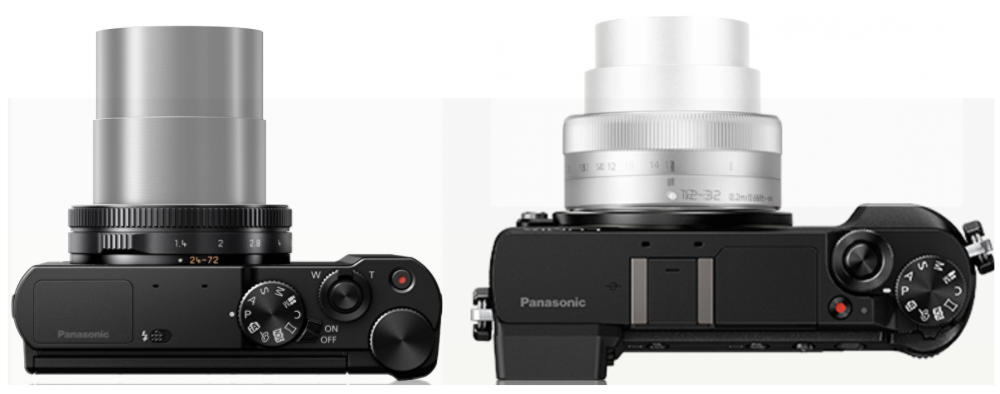-
Posts
8,027 -
Joined
-
Last visited
Content Type
Profiles
Forums
Articles
Everything posted by kye
-
These images are really about what the camera captured - with colour grading there is a huge latitude to change things in post, which is where the taste and preference comes in. The challenge is what you have to work with in the first place. In the thread about colour grading 8-bit footage I showed that there is huge latitude to push things around in post - to the point that you can bring things up by 4-stops without ruining the image: Of course, if your highlights are clipped then there's basically zero ability to change it in post! After reflecting on things after posting the images above (and also of reviewing a bunch of other shots I didn't post) I think that the images look and feel like reality somewhere in-between the two extremes I posted. I can't recall how much I had to stop down to pull the highlights back into range, and it probably varied depending on the situation, but it might be a case of maybe shooting a stop under what the GX85 wants to shoot at that might give a nice middle ground. I must admit that the highlight blooming on the lens is quite nice, giving a sort-of magical feel to the lighting, while not making the image to surreal in daylight situations or being impossible to use with strong light-sources. There's always more lenses to add to the kit!! I used to shoot exclusively with manual primes and I worked out that for the travel work I do that the following were the right lengths: 16mm equivalent FOV: This is used for WOW!! shots.. buildings and landscapes. It also does crowded interiors too. Going wider than this makes things look too distorted, and going longer doesn't give that WOW!! factor. I forgot to mention it in my equipment summary, but I have the iPhone for the super-wides during the day (it isn't good enough at night unfortunately) so that compliments the walk-around zoom lenses. 35mm equivalent FOV: This is for environmental portraits, which is essentially the main subject of my work. I shoot mostly travel with family and friends and the subject of these films is the people interacting with the environment. Combined with the distance I am normally standing away from the subject, this is about the right FOV. If I went wider then the people are smaller in the frame than I'd like and if you get closer to compensate then lens distortion becomes undesirable. It's also good for landscape shots too: 80mm equivalent FOV: For things that are further away. When I first started travelling with the 3-prime setup I took the Helios 58mm F2 with a non-speed-boosted adapter but found the 116mm equivalent FOV on the GH5 to be too long - it was too much of a gap and I found myself swapping from the 17.5mm prime to the Helios and then swapping back. The gap between the 35mm FOV and 116mm is a 3.3x increase in focal length. I have since bought a M42-M43 speed booster which remedies this. So now that I've moved to the GX85 and the crop factor in 4K is 2.2x, the FOV of the lenses is: Laowa 7.5mm F2 is 16.2mm FOV TTartisans 17mm F1.4 is 37.4mm FOV (2.3x previous) Helios 58mm F2 with SB is 90.6mm FOV (2.4x previous) The 20mm F1.7 would be a 44mm FOV, which is a bit too tight in my experience. Of course, if I use the 14-140mm F3.5-5.6 zoom during the day and 12-35mm F2.8 for walking around "well-lit" places at night, the only use for the primes I would have is for very low light situations where I can shoot slower and take the time to MF properly. In terms of what those situations demand, I'm not really all that sure. The Olympus 75mm 1.8 might be a useful addition for super-tight low-light shots, although it might be a pretty specific lens. I want to capture what I see, so it's not a case of going out with a lens and finding the frame, it's a case of going out and experiencing things and capturing the most that I can. What use cases would the 75mm f1.8 capture that the 14-140mm F3.5-5.6 couldn't? If I had the budget, the 20mm F1.7 is so small that I could easily fit it into my bag, but the 15mm F1.7 is also a lot smaller than the TTartisans 17mm F1.4 as well that either one would work just as well, except that the 15mm is wider. The 4K from the GX85 can always be cropped slightly without much impact to image quality too. I already own the 17mm F1.4 so it's not a case of having a preference, although the 20/1.7 is 2.7x the price of the 17/1.4 and the 15/1.7 is 4.4x - so budget might have had something to do with it! I was using only fast manual primes, but now I've come to value AF over DOF, so the primes are relegated to low-light duties, however if I could get fast AF primes then that would be desirable too. It's probably something I'd look at upgrading to over time, assuming I stay in the MFT system, of course.
-
One thing that you might not have anticipated is the ergonomics of such a lens. I bought a CCTV zoom lens to modify my action camera, and it has two rings - focus and zoom (it doesn't have an aperture) but they don't work how you'd think. On a normal lens you'd expect that the focus would stay in the same spot (or similar) throughout the zoom range, but on the lens I have it's almost the exact opposite. On my lens, moving both the zoom and focus rings together maintains a broadly-similar focus distance as the zoom changes. The lens you buy could be anywhere in-between. Also, my lens has enormously non-linear travel of the focus mechanism, which means that to make an adjustment in focus at one setting only requires a very small amount of force, but at another area of the focus travel it takes a large amount more force to move the focus the same small amount. The lens contains oil to make it move smoothly, but this makes the movement a bit odd - when you first try to get it moving it's like there's some suction holding it in place but once it starts to move the resistance drops very quickly. This combined with the small travel and very small size of the lens means that making a small adjustment to nail critical focus is extremely difficult. These quirks are symptoms of the fact that these lenses are designed to be installed in fixed locations, adjusted, and then left that way for perhaps their entire lifetime. Ease of use to focus quickly and easily hundreds or thousands of times wasn't in their design remit. Anyway, the lens you linked to looks like it's designed to be used by a human at least (mine has locking screws as the only thing to grip onto) but I'd see if you can find a review first, so you know what you're buying.
-
Last night I went around town with the GX85 and 12-35mm F2.8 testing if F2.8 was fast enough for "well lit" places at night. Turns out it was fine, and most scenes were at ISO 400-1600 with a 360 shutter, but unexpectedly, DR was a challenge. I posted about it in my other thread, so I didn't dilute this one too much. There's sample pics over there too. Obviously the low-light performance of the camera makes a difference, and some might not be wanting to be shooting at ISO 3200. From that perspective, the F1.7-1.8 lenses being mentioned seem like a great aperture - not so much as to make the lens huge but not so little that quality suffers.
-
I wanted to expand on some things but didn't want to clog up the other threads, so am back to this thread. I previously said this: The Full Tourist Mode includes "GX85 + 12-35mm for walking-around well-lit places at night" which I wanted to test, so last night while the wife was at a concert, I wandered around town with the GX85 and 12-35mm in aperture priority with auto-SS and auto-ISO and took a bunch of test shots. Everything was hand-held, and I'd assume it's at 360 shutter the whole time, which I don't mind, especially considering the Dual IS means there isn't a lot of hand-shake. The TLDR of it is that: I think the theory works - the GX85 + 12-35mm at F2.8 is good enough for "well-lit" places at night Most of the places I wanted to shoot were ISO 400-1600 and the noise is OK from the GX85 at those levels The DR is a challenge at night, which is something I hadn't considered - by the time that you don't clip the highlights you're making the shadows a lot darker than they appear in real life Here's some shots SOOC. Where there are two shots, it's because it wanted to expose in a way that clipped a bunch of stuff and so the darker shot is me reducing the exposure with Exposure Compensation to the point that the highlights aren't clipped. As these are frame grabs from VLC, the highlights might be more clipped than they would be in the grade because the GX85 clips at 105% so VLC might be cutting off that top 5%. Here's what I mean: My recollection was that the ambient light on the street was around or below the top one, but the signs and lights in the shops looked even more dynamic and sparkly and sharp than the bottom image shows. Same with these: The mall also wasn't this well-lit: I also said that I could fit the GX85, BMMCC rig and the 14-140mm, 12-35/2.8, 7.5mm F2, 14mm F2.5, 17mm F1.4, 58mm F2 with SB lenses into a camera insert. Here's that: The GX85 and zoom goes into one side, and the primes go into the other: Obviously I still need to DIY some protectors to keep the lenses protected from each other. Then, with the BMMCC monitor folded all the way forwards it can go pretty flat: That has the 14-42mm kit lens on it as a stand-in for the 14-140mm that I haven't bought yet. The 14-140 is a bit thicker, so the monitor won't lie as flat, but the difference isn't that much. The BMMCC rig goes on top of the lenses: ...and we're done. I normally carry around a blower and a small lens brush (makeup brushes from the supermarket are really soft and have short handles to fit into camera bags) so I might need to finesse this a bit, but that's the basic concept. These easily fit into this ebay-special sling bag I got: I won't be winning any fashion competitions with this, and it's larger than I'd like, but I'm on the lookout for one smaller and more appealing. It's not that I'm a fashionable person (ha! what a concept) but if you want to blend in with the locals in fashionable places then you have to look the part. Anyway, work still to do, but progress is positive.
-
When I saw Johns post I did a little searching to see if there were other faster options around the 17mm mark.. just for curiosity here are all the options I could find: Sigma 16mm F1.4 (large) Oly 17mm F1.2 (large) Voigtlander 17.5 F0.95 (MF) Panny 15mm F1.7 TTartisans 17mm F1.4 (MF) Mitakon Zhongyi 17mm F0.95 (MF) Laowa 17mm f/1.8 (MF) I'm guessing that if you care about having a small AF lens then there aren't that many options, but lots of people have had a go in that FOV range!
-
I'm sorry to hear that. Maybe if you switch to creating content with an interchangeable lens camera, learning lighting and blocking, then you will be able to attract a viewership with a taste for more cinematic images? I hear that once the algorithm has pigeon-holed you in one genre it's hard to change because you have to break out of the echo-chamber you're currently in.
-
I always liked the rule that anyone that stuffed up a take through stupidity had to buy the drinks for the wrap party. It ensured people checked things properly when coming onto set, but it also made for a great wrap party 🙂 It also made for some legendary stories!!
-
It's hard to recommend the GH5 at this point, despite the fact that I'm a passionate MFT user, when the specs of the S5 and S1 are so much better. You can make great content on anything of course, but better specs gives you more options on set, or means you don't have to be as picky about lighting etc, and when you're on set, time is money. I'll paraphrase the recommendation from @KnightsFan and suggest you start with your end goal and work backwards. Your end goal is to create a certain type of content with a certain type of look. This will best be achieved using a certain type of shooting and a certain type of equipment that makes this easier and faster. Then look at options for lenses across the crop-factors, then choose your format/sensor-size, then the camera body. Going the other way results in nonsensical decisions!
-
Also, if you've got some budget then the new BM Micro Studio Camera 4K has dual native ISO, which could radically improve the footage and lens options in conditions like these. Also, also, if you have a few BM cameras, maybe hiding them around the place would give you a few more angles to work with in post? If you don't have other fast lenses then maybe you could go down to 12fps with a 360 shutter to have a special effect angle with 1.5 or so more stops of exposure. If such an angle was static then the extreme motion blur of the shot wouldn't be so disorientating. Music videos is a place where there's huge creative license, so don't be afraid to lean into the challenges and create a strong look 🙂
-
Nice work, especially given the challenging conditions! The colours look nice though - in low light most colour rendering turns to muck but these colours are strong and pleasant. You could have boosted the saturation and contrast IMHO, and even lowering the exposure to the point where the shadows are crushed would be fine. Since the DR of cameras started climbing higher people became afraid to clip the blacks, even of things that probably looked black in real life, which is a shame as professional productions will do it and it creates a really strong look. It might be worth doing some testing to see which combinations give the sharpest images. For example, if you had a stop more light then would you be better off lowering the ISO to 800 and keeping the lens wide open, or stopping down a stop and leaving the ISO at 1600, or getting a brighter image in post? What about if you have two more stops? These are the kind of tests I wish I had done when I'm looking at my footage and wishing I'd done it differently.
-
My friend takes stills of his family holidays and has an ancient relic (IIRC it's a Canon 30D?) that he would always take with him. He is a minimalist and was sick of hauling it around so did his first overseas trip without it and used his iPhone 5 (current at the time). He took a bunch of photos on the trip, but when I asked him about it his thinking wasn't clear. On his next trip he took an updated iPhone (maybe an 8?) and took lots of photos again, but still didn't have clear thinking about it. It was only several years later that he had a good reply, he said "The photos look fine but I realised that I never felt compelled to print and hang any of the photos from it". He still can't define what it is, but something is missing for him. I've looked at the prints he's got hanging in his house and the difference isn't obvious - it's not like his prints have shallow DOF or anything, they just have this timeless sort of look about them, and his iPhone pics all look like iPhone pics (unsurprisingly). Even the RAW stills from my GF3 from 2011 don't look like iPhone pics, even the current ones. It might be a matter of blurring the iPhone images a bit, and toning down the strong saturation and contrast, who knows, but maybe they'll get over that hurdle soon. Maybe they already have - I still have an iPhone 12 mini and don't use the stills in my creative work. TBH it's probably the "everything is awesome!!" processing that Apple do to their images. Maybe the RAW images off the sensor are fine.
-
I own the original version of that 14-42mm kit lens, but I also own the 12-35mm f2.8 lens, and it's only larger at full extension by about the thickness of a lens filter and is slightly fatter, but it's also 1-2 stops faster, which matters on these single ISO MFT cameras if you're walking around at night. In reviewing my footage from previous trips I concluded that in reasonably well lit exteriors (like outdoor shopping malls) my main iPhone 12 camera is fine (it's got similar noise to GX85/GH5 with a F2.8 lens) but the iPhone 12 wide rear camera has the noise performance of the GX85/GH5 with an F8 lens, and the footage was so noisy it was hard for me to use on my home video edit. So if I'm going to potentially be in less-well-lit interiors or anywhere at night, I'd appreciate the F2.8, and with the GX85 you can always crop in post on a 1080p timeline to get the slight extra reach. I haven't really had an issue with the internal audio of the GX85, but I mostly use the camera audio as ambience and have music over the top. Of course now we have these AI tools in post it's easy enough to clean up a voice if someone says something I want to put in the final edit. If you haven't seen them, they're absolutely stunning. A mic input changes everything, of course, including radically altering the camera size and conspicuousness, unless you are running a lav to it, but even then, having even "a touch of the Borg" attracts attention. The general public are very vigilant against assimilation - oddly even including those that never watched Star Trek. I definitely agree that the 14-140mm would make a great option. I only do a few trips a year and so think carefully in preparation for them. My current thinking is this: Full tourist mode is the GX85 and OG BM camera setup, and is where I don't care about weight and want the ultimate options: GX85 + 14-140mm for walking-around during the day GX85 + 12-35mm for walking-around well-lit places at night GX85 + primes for less-well-lit places at night BM for high-DR situations where I have time to manually expose and shoot (lookouts at sunset, for example.. these are strangely frequent on my holidays 🙂 ) Equipment: GX85 + 14-140mm P2K or M2K with 12-35mm F2.8 Primes: 7.5mm F2, 14mm F2.5, 17mm F1.4, 58mm F2 with SB This all fits into a camera insert inside a generic backpack Stealth tourist mode is the GX85 and is where I want to be stealthy and shoot quickly: GX85 + 14-140mm for walking-around during the day GX85 + 12-35mm for walking-around well-lit places at night This fits into a sling bag, which are now fashionable, how convenient! Non-tourist mode is the GX85 and 12-32mm zoom (and maybe the 14mm F2.5 if it'll get dark) slipped into a jacket pocket. If I'm travelling this is what I would take if I was leaving the hotel but didn't want to take a bag. I don't own the 14-140mm or 12-32mm lenses currently, but assuming my thinking doesn't change in the interim, I'll buy these in preparation for our next trip. I ended up shooting a lot with the GX85 and 14mm F2.5 in South Korea (almost exactly a year ago) and got a lot of great shots with the combo, and I really liked the size even though I took a backpack almost everywhere due to being in full tourist mode. I've shared some images from this combo before in other threads but happy to re-post if you haven't seen them.
-
That X-factor that some cameras have is equally baffling and also completely compelling..... I understand / sympathise! Wider than 15mm in a manual lens is definitely a struggle. What is the crop factor of the EOS-M 1:1 mode you're using? There are a plethora of vintage and new c-mount lenses all over eBay but the trick is to understand the size of the image circle they project and the size you need. The OG BM cameras had a crop factor of 2.88, which was quite large in the world of c-mount compared to the CCTV applications, I have spent many an hour searching eBay item-by-item googling each one to find the size of the image circle - normally to reject every lens I could afford and then just spiralling off to search in reverse-price-order and watch videos of the Angenieux lenses that are sitting there for sale for the price of a newish car. Meteor made a few lenses, some starting at 17mm and others at 22mm IIRC, but I'm no expert on their history. They were made in quantity so are accessible and I don't think people really knew about them when S16 was in-demand so they're priced reasonably. Also, most of the lens tests I've seen show that they're super-soft and vintage, but there are a few on YT where the images are super-sharp and clean, so I'm not sure if some copies are bad, or if most of the people testing them don't know what they're doing, or if most testers wanted that heavy vintage look, or if they simply uploaded them in 720p at pathetic bitrates because no-one knew how YT compression worked back then. TBH, most of the videos with these vintage lenses are either by people that don't know anything about anything, or they're by people who want the vintage look and so are pushing the quality to be as crap as possible and not showing the capabilities of the equipment. It shits me that most of the OG BMPCC tests are like this - people don't take the time to show the potential.
-
I took my GF3 around Europe and into the US and shot using only the kit lens and the 14/2.5, mostly on full-auto, and with RAW images I was basically never disappointed. The only thing that I missed was the look of Canon colour science, so I bought a 700D after that and really liked the images from it, but the additional size would have made me question if I would take it travelling. The best images I took were enabled almost exclusively because I was shooting fast, thinking creatively, and going mostly un-noticed - which are all direct results of having a small automatic camera. When I was first learning video I was absolutely stunned by how fragile and, frankly, crap the video from mega-dollar prosumer cameras was in comparison to the RAW still images from an ultra-budget pocket camera. If I was still shooting stills I would have on from discussing equipment probably a decade ago.
-

Yashica Micro Mirrorless: New MILC system developed by I'm Back
kye replied to eatstoomuchjam's topic in Cameras
Yeah, phones are getting really good now, with RAW and Prores and Apple Log and recording to SSDs. The thing I think is missing is a wide-angle selfie camera. Trying to film yourself using an ultra-wide but without being able to see yourself is possible but hitting record, then turning the phone around, and shooting while presenting a bright image of the frame to everyone around you is strange and awkward on almost all levels! I don't know if the diopters for action cameras also have NDs. They might, considering that a diopter is as technical/geeky as an ND would be, but action cameras are practically designed inside and out to have a short shutter, so it kind of goes against the whole ethos in a way. -
Window shopping is technically allowed, but you've walked right up to the line my friend, so don't lose balance or focus!! The lens(es) that come immediately to mind are the Meteor zooms from the USSR.. They have clean bokeh (linked to timestamp): They're m42 mount, but can be adapted easily: https://fotodioxpro.com/products/m42-c-p-v2 Do you want them to be specifically c-mount? Why? (I'm curious) I'd imagine that adapting FF or S35 lenses would be much more fruitful? My impression of c-mount zooms is that most are 15-22mm on the wide end, which is pretty easy to replicate with FF or S35 manual zooms if you can get a speed booster in the stack. I got a manual RMC Tokina 28-70mm F3.5-4.5 in m42 mount that combined with my m42-m43 speed booster gives me 20-50mm equivalent, and a nice vintage vibe without being too mangled (so it's the optical quality of a high-end c-mount zoom from back in the day). What camera is this for?
-
Thanks for sharing those pics, that's useful. Here is a rough estimate for each camera then.. estimating from your pics and from the images I compiled: GX85 with pancake lens - 12cm wide x 10-12cm long GX850 with pancake lens - 11cm wide x 9-11cm long ZV-1 - 11cm wide x 10cm long LX10 - 11cm wide x 9cm long Interesting that the GX85 with 2.6-3x zoom lens is only 2-3cm longer than the LX10, which is the smallest of the bunch, despite the fact that the GX85 has a much larger sensor and has IBIS and an EVF. Considering that the size while off doesn't matter to me that much and that the stabilisation is so critical, the fact I can get Dual IS on the 12-32mm really makes a difference when doing walking shots, which is a lot of the shots I take. Even if I add the 12-35mm F2.8 lens, the GX85 only grows to 10cm at the wide end and 14cm at the long end, including the body, so although the lens is hugely fatter, it's not much larger and might even look less like a telephoto to causal bystanders (and might even look older / less modern and therefore less threatening because it's fatter). I think I'm talking myself out of wanting an LX10 or GX850. I did really like the auto-everything / no-controls-just-shoot-creatively aspect of my GF3 though, so the GX850 would provide that same experience but with dramatically higher resolution images. It's a different kind of shooting really, maybe that's how I should look at it. I watched this yesterday and was absolutely stunned at how great it was - you can tell the guy is a professional cinematographer.. still, many of the images could be captured at 90-95% with a small camera. The more I see edits like this, the more I am reminded it's about composition and lighting and (in the absence of skill like the above) just shooting more so that you have a greater chance of getting lucky. I guess that's potentially a theme for this whole thread. Smaller camera = shooting more = more options and more variety = more options in the edit = better edits.
-

Yashica Micro Mirrorless: New MILC system developed by I'm Back
kye replied to eatstoomuchjam's topic in Cameras
Cool you have a setup that works for you. I guess the thing that I noticed with the different focal lengths was that you needed the width to make it look like you weren't holding a camera. I assume this angle is the ZV-1 on the handle? Whereas this is a GoPro on a similar handle: It just doesn't have that same "I'm holding you as far away from me as I can!!" sort of vibe 🙂 I do recall parts of Asia also having signs up that said "No selfie sticks", as well as places like the Vatican IIRC? The Vatican also doesn't allow tripods either, so not sure how the handle would go if it splits into legs. Make Art Now also got a reasonable frame with the Insta360 Ace Pro by putting a diopter on it to shorten the focal distance: But, in the end, it's what's in front of the camera that matters 🙂 -

Yashica Micro Mirrorless: New MILC system developed by I'm Back
kye replied to eatstoomuchjam's topic in Cameras
When I was first getting into video I experimented with a selfie angle, but eventually realised that the videos I wanted to make didn't need it. What I learned though was: You need a super-wide angle lens, unless: - you want to be walking around with your arm extended almost the whole way, which is tiring, impractical in more crowded situations, and attracts a huge amount of attention - you want to be walking around with a camera on a stick, which has the same challenges in crowds and attracting attention - you are fine with the frame just being of your head and nothing else You don't actually need a selfie-screen You can just get used to the framing and if you put yourself in the middle of the frame then the lens distortion is fine - millions of hours of vlogging footage was recorded on Sony FF cameras with 16-35mm lenses and no flippy-screen If I was vlogging as part of my videos I'd just get one of the action cameras with a half-decent audio input and customise it from there, potentially with a diopter to adjust the focus to be perfect for the right vlogging distance and throw the background out of focus a touch. I'd also just apply un-sharpening in post to improve the image quality by 20-40%. -
Just window shopping for tiny cameras (tiny-er than the GX85) and realised I don't really care that much about the size of the camera with the lens turned off, I care about the size when I'm waving it around actually shooting footage. Comparing the LX10 with GX850+12-32mm kit lens, I think the LX10 might be longer?? The zoom ratio is only 3.0 compared to 2.66 for the 12-32, so they're almost identical lenses too. Obviously, it's smaller when closed: BUT, the LX10 lens really really extends (at least for some of its zoom range)... and (as far as I can tell) the 12-32 doesn't extend nearly as much? These are the best images I could find of the lens extended: Also, the 14-42 doesn't look much larger either: Does anyone have all these bits and can give a more definite answer? If the incognito factor is important then it might be that the GX850 and 12-32mm might be better. In fact, the LX10 might not even have much of size advantage over the GX85 with the 12-32 lens, when both are fully extended... I got a direct size comparison image and superimposed the best quality images of the two lenses extended that I could fine (the lens images are transparent so you can see the overlays - the size match is almost perfect on both). Obviously lens extension isn't everything, but in use it's potentially a factor. Members of the public are aware that the longer the lens the more zoomed it is, so anyone who is uncomfortable with the idea of being filmed from a distance might really notice such a thing.
-

Yashica Micro Mirrorless: New MILC system developed by I'm Back
kye replied to eatstoomuchjam's topic in Cameras
What a fascinating project! I wish them well, but it's not exactly what I need. I do think there is a niche here, though. The competitors are: MFT - much larger in comparison Action cameras - either don't shoot in high enough bitrates or don't have a good / large enough front-facing camera or don't have the lens options Smartphones - some don't shoot in high enough bitrates but all(?) either have one focal length on the selfie-side that isn't very wide or have several on the rear but no selfie screen at all (or it's tiny) The challenge with such a system would be the crop factor and getting lenses at the wider end - it's hard enough for the S16 crop of the P2K and M2K, but this is much worse. Perhaps the competition is a smartphone plus an action camera with front-facing screen? Still not the best combo. -
It looks to me like it was added in post as part of the grade, but obviously can't confirm that. Apparently it's the same sensor as the P4K, so until we get ISO tests I'd just assume that it's the same as that?
-
I did notice the flares - they were there but not overpowering.. I'd imagine for many who are interested in the flares in-particular that this might be an interesting option to use in situations where more typical anamorphics would flare too heavily.
-
I just realised that you have to have the handle in order to use AF... it appears there's no way to configure the buttons on the camera body itself - the manual only talks about configuring the buttons on the optional (and huge) handle.
-
Perhaps the premise of the question would be interpreted differently if the two cameras were more different to each other. For example, if I asked the same about the GH5 vs GH6, then there would be things to talk about, and spending time looking at the various specs and performance would be worthwhile. It's also helped by the likelihood that I'd own the GH5 and be questioning an upgrade - so it's a question that would have real-world implications and would be of value to discuss, rather than a purely theoretical question. In the case of the A7S3 vs A74, the strengths are very similar or don't really matter (both have enough DR for almost anything you might want to shoot) and the weaknesses are similar too.




